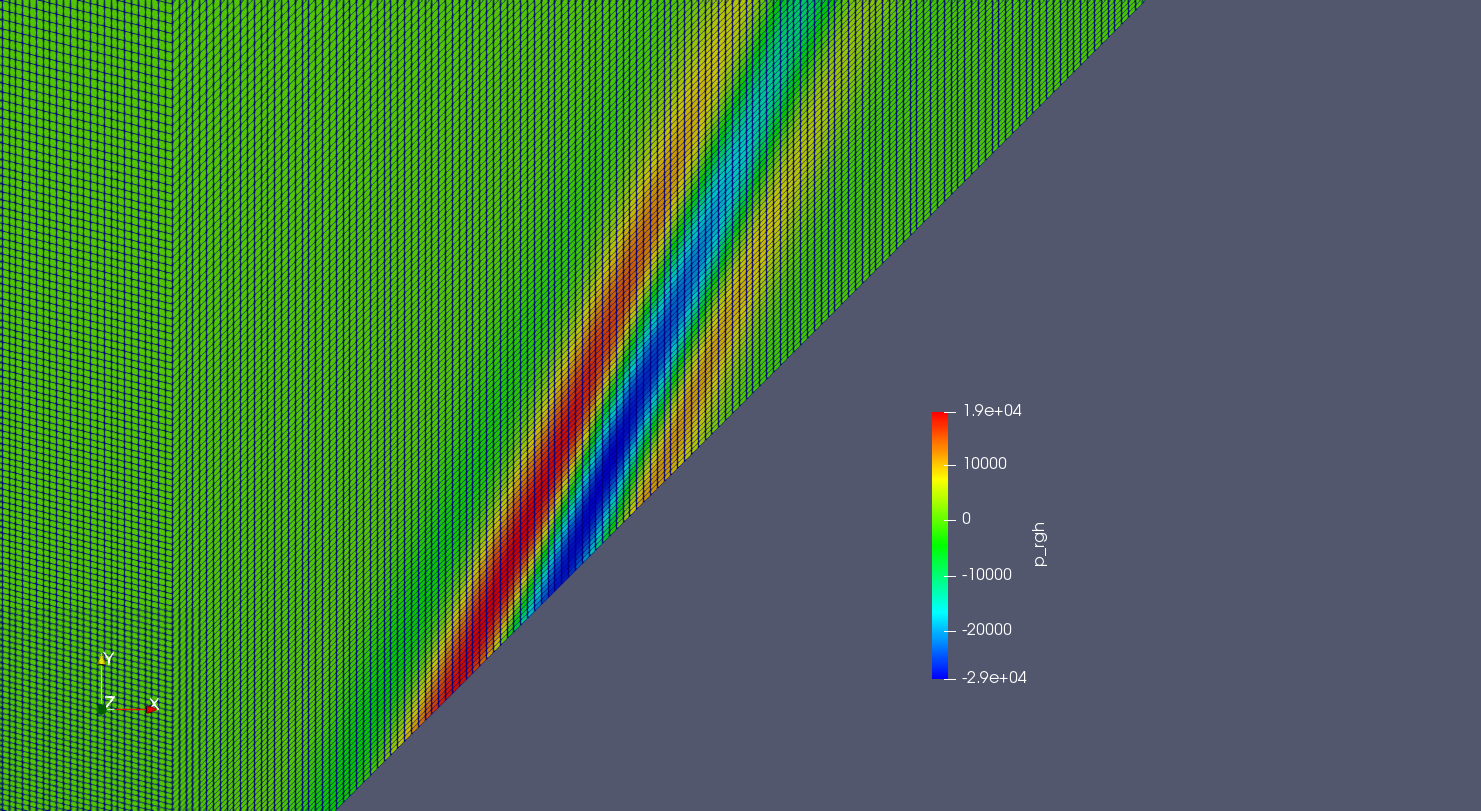@队长别开枪 非常感谢,很有帮助,抱歉回复得有点晚了
我起初参考论文[1],通过PLIC重构,进而得到一个每个面上AOF(area of fraction),来作为alphaEqn.H中的phiAlpha相可以显著提高界面精度。此外论文中实现了非结构化网格的PLIC,依据的是Maric T[2]的迭代方法,这部分可能和你的工作相关。
isoAdvector的实现确实很有参考意义,学习中,最近作者好像在测试AMR了,可能不久会发布。
之前Maric T说过等完成了会公开Code,见https://www.cfd-online.com/Forums/openfoam-programming-development/89713-plic-interfoam.html,后来似乎没有。猜测可能出书,办培训班的原因,看了一眼去年他的博士论文,里面涉及了PLIC和其他界面追踪方法,个人底子差,确实难懂...
关于我的课题,除了精确界面,还需要关注的是界面张力项,CSF模型有更大影响,所以在试着实现一个新的张力模型,在你给的论文中作者反复提到了“ without smearing, dispersing or wrinkling.”,大家都知道OpenFOAM原来的方法在smearing方面表现不好,其余wrinking方面是不是也表现不好,在2-D vortex测试中会出现不明锯齿状界面,那dispersing方面呢?
[1]Dianat M, Skarysz M, Garmory A. A Coupled Level Set and Volume of Fluid method for automotive exterior water management applications[J]. International Journal of Multiphase Flow, 2017, 91: 19-38.
[2]Maric T, Marschall H, Bothe D. voFoam-a geometrical volume of fluid algorithm on arbitrary unstructured meshes with local dynamic adaptive mesh refinement using OpenFOAM[J]. arXiv preprint arXiv:1305.3417, 2013.




